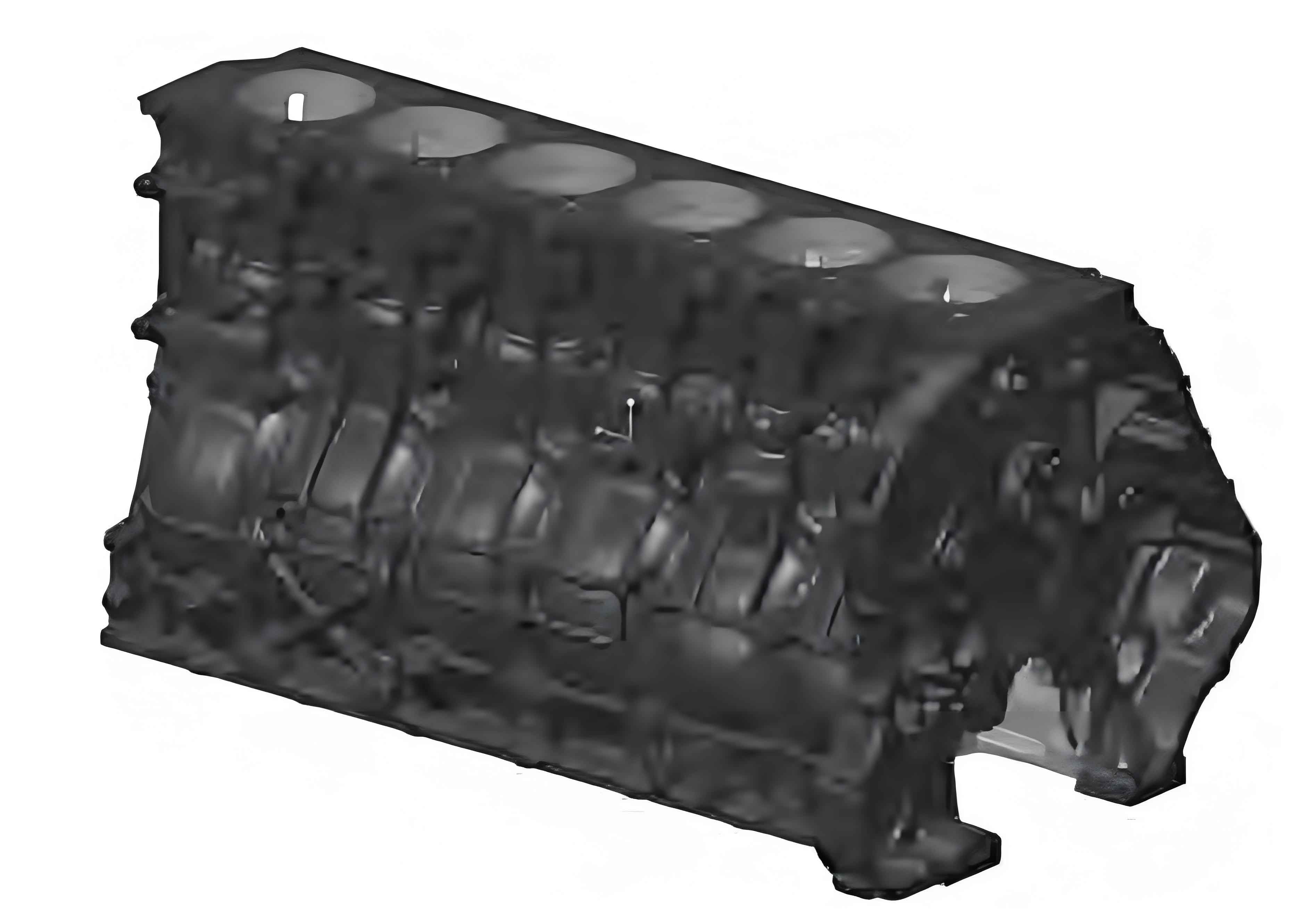Traditional manual grinding processes in foundries face significant challenges including high labor intensity, inconsistent quality, and difficulty in workforce recruitment. This paper presents a comprehensive robotic grinding solution for engine cylinder block castings, addressing critical technical barriers through innovative system design and adaptive control strategies.

1. Technical Challenges in Engine Cylinder Block Grinding
The geometric complexity and casting variability of engine cylinder blocks create unique challenges:
| Challenge | Technical Impact | Solution |
|---|---|---|
| Dimensional variation (±1.5mm) | Positioning errors | Adaptive fixturing |
| Burr height variation (0.5-5mm) | Tool loading fluctuation | Force-controlled grinding |
| Multi-surface requirements | Process complexity | 6-axis robotic manipulation |
The contact force during grinding operations follows:
$$F = \mu \cdot P \cdot v^{n}$$
Where:
$F$ = Grinding force (N)
$\mu$ = Friction coefficient
$P$ = Contact pressure (MPa)
$v$ = Relative velocity (m/s)
$n$ = Velocity exponent (0.7-0.9)
2. Robotic Grinding System Architecture
The developed system integrates multiple advanced technologies:
| Component | Specification | Function |
|---|---|---|
| 6-axis Robot | 200kg payload, ±0.05mm repeatability | Precision motion control |
| Air-floating Spindle | 20kW, 15,000 RPM | Adaptive material removal |
| Laser Profiler | 0.01mm resolution | Real-time surface mapping |
3. Adaptive Fixturing Technology
The floating fixture system enables reliable positioning for engine cylinder blocks with dimensional variations:
$$P_{loc} = \frac{\sum_{i=1}^{n} w_i \cdot p_i}{\sum_{i=1}^{n} w_i}$$
Where:
$P_{loc}$ = Final positioning coordinate
$w_i$ = Weighting factor for each locator
$p_i$ = Individual locator position
4. Process Optimization and Quality Control
The material removal rate (MRR) is optimized through parameter adaptation:
$$MRR = K \cdot F_t \cdot v_s \cdot \left(\frac{d}{D}\right)^{0.5}$$
Where:
$K$ = Material constant
$F_t$ = Tangential force
$v_s$ = Surface speed
$d$ = Depth of cut
$D$ = Wheel diameter
5. Industrial Implementation Results
Field testing with engine cylinder block castings demonstrated:
| Metric | Manual Process | Robotic System |
|---|---|---|
| Cycle Time | 45 min/part | 28 min/part |
| Burr Height Consistency | ±0.8mm | ±0.3mm |
| Tool Consumption | 3.2 pcs/100 parts | 1.5 pcs/100 parts |
The system achieved 92% first-pass yield rate for engine cylinder block castings, with residual burr height maintained below 0.5mm across all test specimens.
6. Economic Analysis
The return on investment (ROI) for engine cylinder block grinding automation follows:
$$ROI = \frac{(C_m – C_a) \cdot Q}{I} \cdot 100\%$$
Where:
$C_m$ = Manual cost per part ($8.50)
$C_a$ = Automated cost per part ($3.20)
$Q$ = Annual production quantity (50,000)
$I$ = Initial investment ($1.2M)
This configuration yields 220% ROI over five years, demonstrating strong economic viability for engine cylinder block manufacturing applications.
